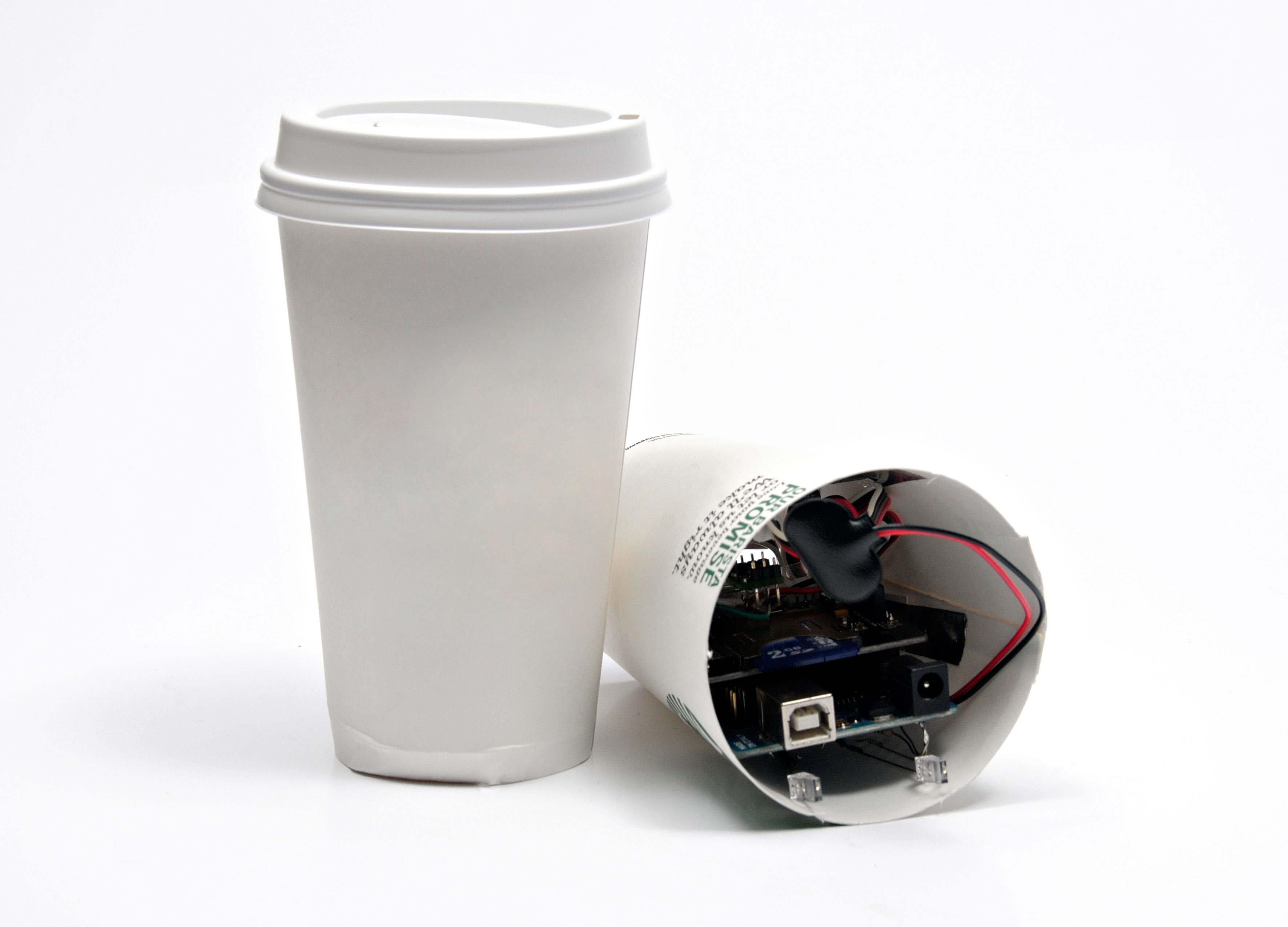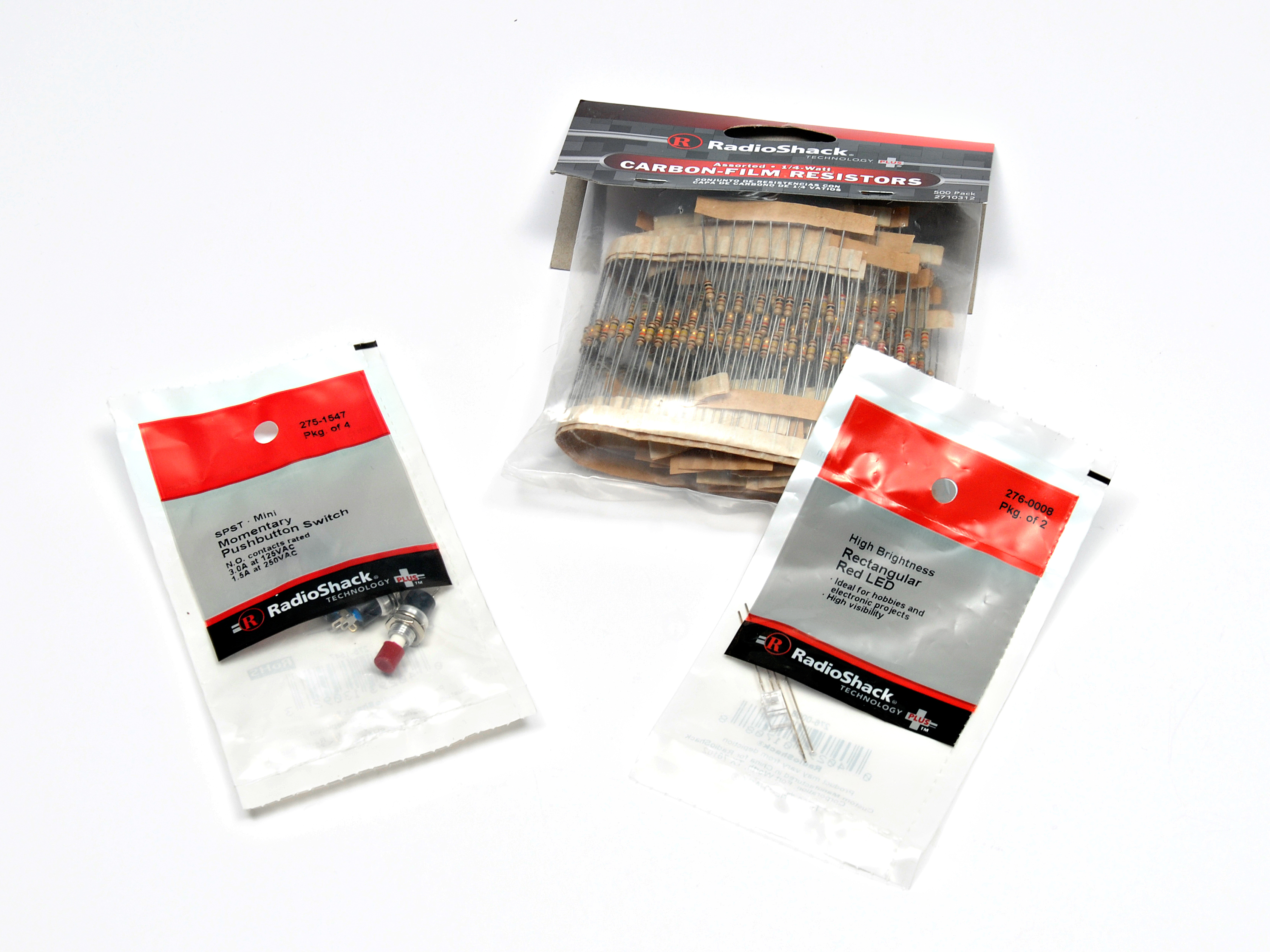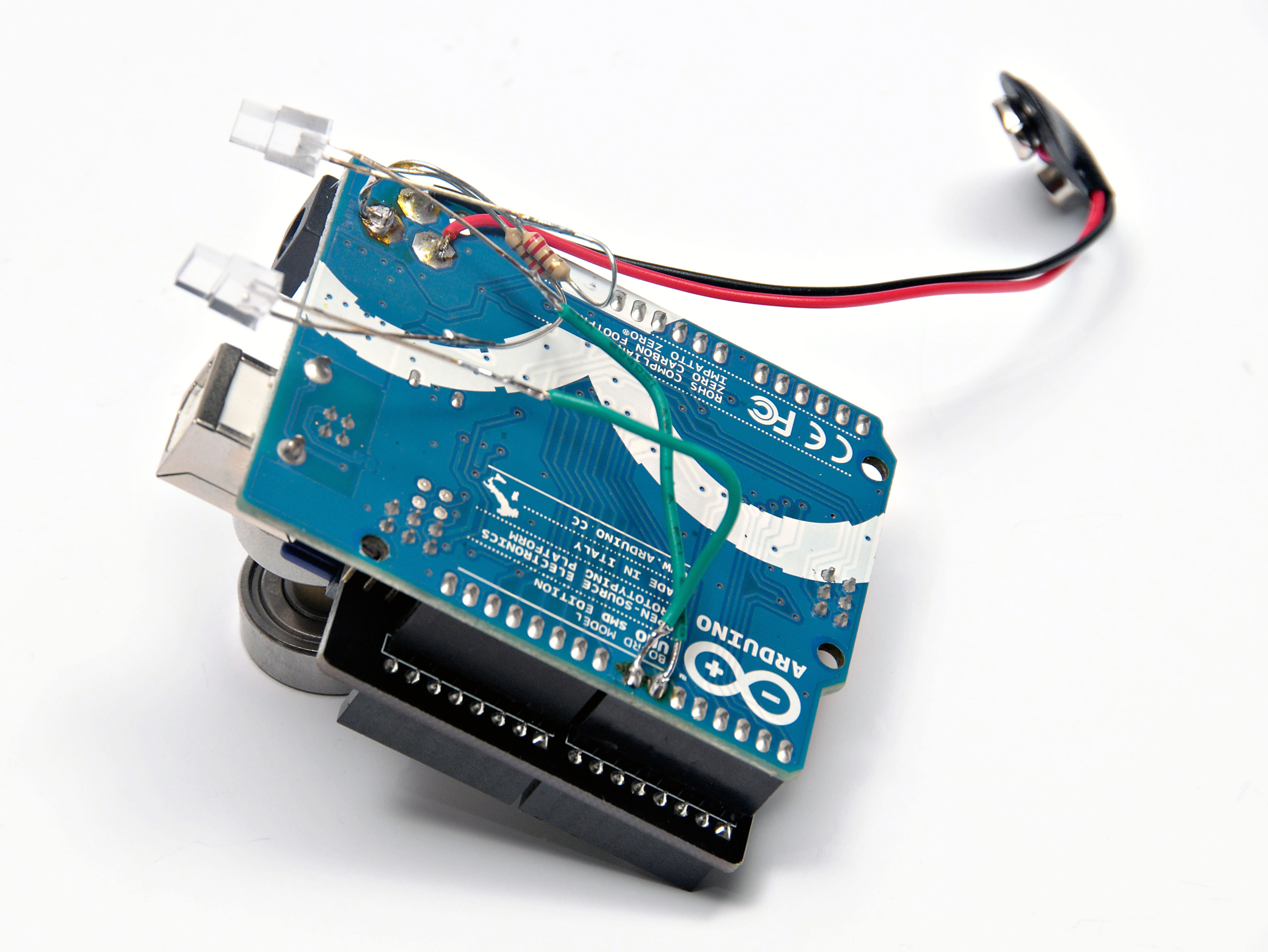Take your cup of Joe from classic to classified with a tilt-triggered spy camera.
The trick is to modify two paper coffee cups — install the device in one, slide it into the second, and align holes cut in the bottoms of each. Two LEDs can be seen through the standard plastic lid — one illuminates when the tilt switch is activated, the other flashes twice after a picture has been taken.
Think your cover has been blown? Simply rotate the cups to hide the camera.
This project combines several modules into a tilt-triggered spy camera that fits inside a coffee cup. The component which triggers the tilt is the Memsic 2125 accelerometer, a dime-sized component which you can see here:

You can read more on the component’s specifications on its datasheet, and a get basic understanding of the accelerometer’s interaction with the Arduino using the pulseIn() function here.
The project is installed in one paper cup with some modifications to it: the top is trimmed off, and a hole is cut in the bottom for the camera’s lens to point out. This cup will then slip in to the other cup, which also has a hole cut in its bottom. With the two holes lined up, when you lift and tilt the coffee cup the LEDs will illuminate: one will turn on when the tilt switch is activated, and the other will flash twice after a picture has been taken. You can see the light from the LEDs through the plastic lid.
Depending on the model of TTL Serial camera you acquire, you will need to experiment with how to mount the camera inside the cup. Larger form factor cameras will likely not be able to point directly out the bottom of the cup, and instead the image will need to be ‘bounced’ using a reflective mirror tile. I have provided detailed shots below on how to make this happen. However smaller form factor cameras (whose PCB is smaller and which contain through-hole connections instead of extending leads) should be able to be installed in such a way that the lens points directly out of the cup’s spy hole. Keep in mind you need room for the Arduino and SD card shield, and other components.
Experiment with the TTL Serial camera you acquire, grab some additional paper coffee cups, and play around with how to install your camera. In the steps and images below I have used quite a large spy hole, to guarantee the lens sees enough light and therefore captures a quality image. You may want to decrease the size of the spy hole, given the diameter of your camera’s lens, and the size of cup/s you are using to contain the project.
In other words, have fun customizing your Coffee Cup Spy Cam!

































